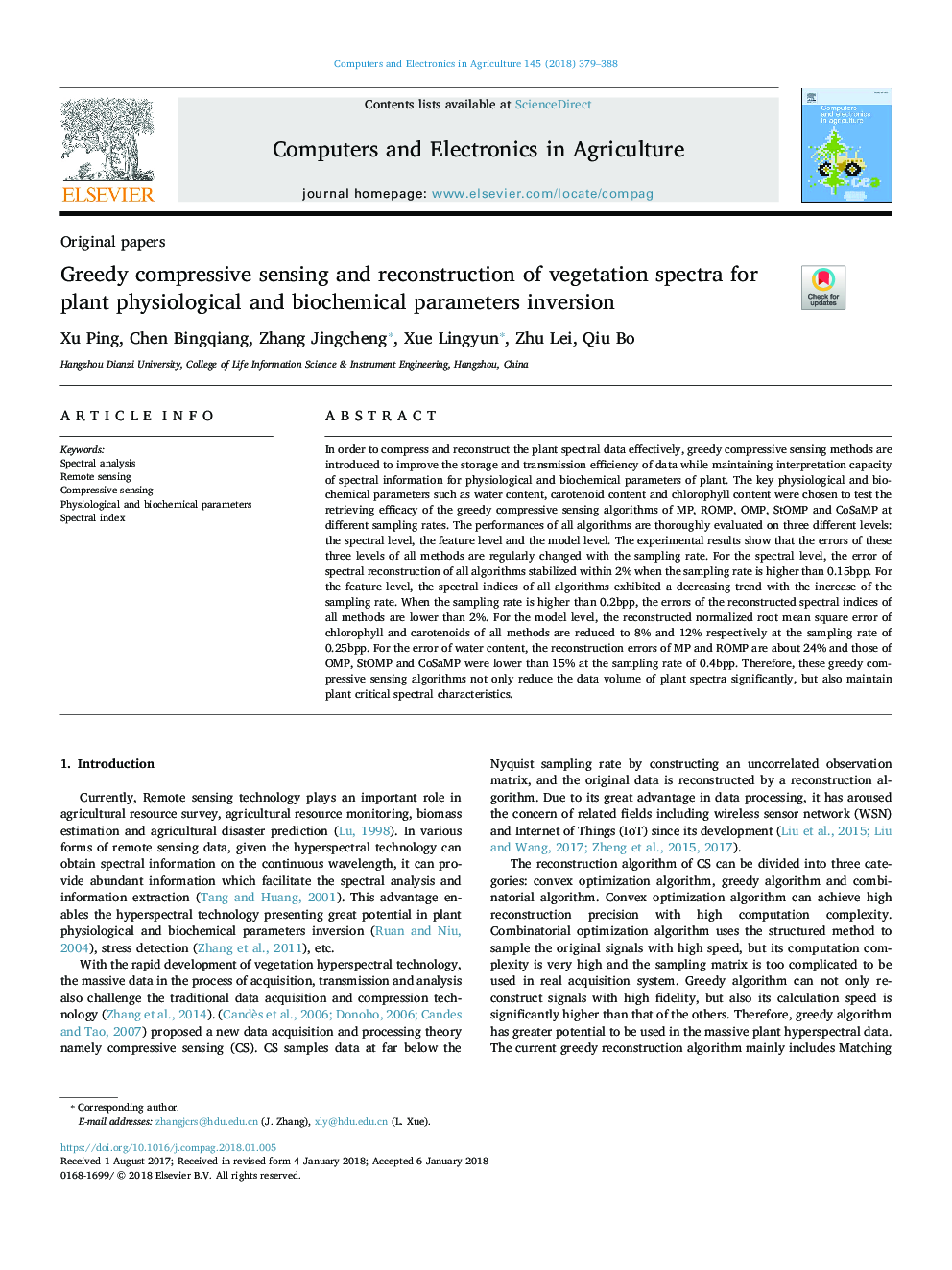| Article ID | Journal | Published Year | Pages | File Type |
|---|---|---|---|---|
| 6539818 | Computers and Electronics in Agriculture | 2018 | 10 Pages |
Abstract
In order to compress and reconstruct the plant spectral data effectively, greedy compressive sensing methods are introduced to improve the storage and transmission efficiency of data while maintaining interpretation capacity of spectral information for physiological and biochemical parameters of plant. The key physiological and biochemical parameters such as water content, carotenoid content and chlorophyll content were chosen to test the retrieving efficacy of the greedy compressive sensing algorithms of MP, ROMP, OMP, StOMP and CoSaMP at different sampling rates. The performances of all algorithms are thoroughly evaluated on three different levels: the spectral level, the feature level and the model level. The experimental results show that the errors of these three levels of all methods are regularly changed with the sampling rate. For the spectral level, the error of spectral reconstruction of all algorithms stabilized within 2% when the sampling rate is higher than 0.15bpp. For the feature level, the spectral indices of all algorithms exhibited a decreasing trend with the increase of the sampling rate. When the sampling rate is higher than 0.2bpp, the errors of the reconstructed spectral indices of all methods are lower than 2%. For the model level, the reconstructed normalized root mean square error of chlorophyll and carotenoids of all methods are reduced to 8% and 12% respectively at the sampling rate of 0.25bpp. For the error of water content, the reconstruction errors of MP and ROMP are about 24% and those of OMP, StOMP and CoSaMP were lower than 15% at the sampling rate of 0.4bpp. Therefore, these greedy compressive sensing algorithms not only reduce the data volume of plant spectra significantly, but also maintain plant critical spectral characteristics.
Related Topics
Physical Sciences and Engineering
Computer Science
Computer Science Applications
Authors
Xu Ping, Chen Bingqiang, Zhang Jingcheng, Xue Lingyun, Zhu Lei, Qiu Bo,
